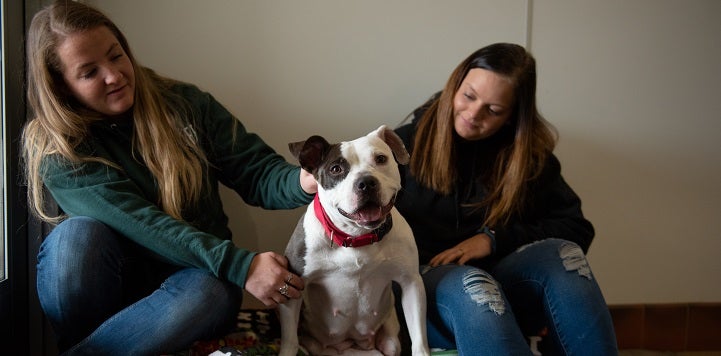
Community-Supported Sheltering
Community-supported sheltering is not just “the latest trend;” it’s a natural progression for shelters and communities. Our industry has evolved from viewing the public with suspicion, which contributed to the unnecessary deaths of millions of dogs and cats, to embracing our communities as partners in our work. Community-supported sheltering is an opportunity to move into the next phase of lifesaving, as it allows us to maximize more of the community resources available than we traditionally have as animal welfare organizations.
What is community-supported sheltering?
Community-supported sheltering focuses on how shelters, the public and government agencies can support one another to protect and serve the most vulnerable pets and their people. Being more directly involved in the well-being of the community’s animals empowers individuals by giving them a sense of ownership and responsibility, and the public-private collaboration maximizes community resources.
As such, no one program “is” community supported sheltering; instead, it is a cohesive integration of programs and strategies that support all stakeholders as invested partners in the work of the shelter.
To be successful, community-supported sheltering requires animal welfare organizations to embrace community members as part of the solution. This is a dramatic shift from the historical belief that animals were the victims of public negligence and ignorance, and the flawed use of legislation and punishment to change behavior.
This mindset is what led to a field marked by overly strict adoption rules, open-door intakes and other policies and practices that created an “us-versus-them” environment. It also did little to address root-cause issues that put pets and people at-risk.
Fortunately, our industry has tremendous progress over the past three decades in evolving away from this negative bias. We are developing ways to serve a public where more than two-thirds of people consider pets to be beloved family members, and where government and civic leaders are committed to safe, humane communities.
What are the benefits of community-supported sheltering?
By learning to trust and empower the public, more than half of all U.S. shelters are now no-kill, and instead of struggling with overwhelming numbers of animals entering their doors they can concentrate on providing resources to those that are in greatest need. They achieve that by engaging in such practices as:
- Helping people rehome their own pets;
- Enlisting finders of stray animals to participate in the search for their families;
- Establishing return-to-field (RTFS) process for community cats and recognizing caregivers as valuable members of the community who deserve support;
- Changing the role of animal control officers (ACOs) to field services professionals who work with the population on animal issues rather than defaulting to a punitive model;
- Building robust foster programs to keep animals out of a stressful shelter environment;
- Expanding on volunteer opportunities, including nontraditional roles like communicating with elected officials on behalf of animal issues;
- Sharing real-time data, lost and found updates, and other details as part of a policy of public transparency; and
- Designing programs and policies to be welcoming rather than exclusive, as well as reflective of the community’s diversity.
Shifts like these allow for public discourse, participation and problem-solving and create a foundation for inter-agency/inter-organizational partnerships. In fact, we are seeing people from all sectors working on societal problems that impact our work, including:
- The pursuit of pet-inclusive housing and insurance policies based on individual behavior and public health/safety rather than arbitrary physical characteristics, size, number or type of pets.
- Recognition of animal sheltering services as essential social services and support of proven, solution-oriented strategies such as scheduled intake of animals and RTF for community cats.
- Budget planning based on human population size and programmatic need rather than shelter intake.
- Integration of social services with animal services to offer multi-dimensional assistance for complex problems.
Resources
Community-Supported Sheltering, online course
How to Encourage Community Support and Save the Lives of Animals in Shelters, vlog
People, Pets, and Policies: Towards Community Supported Animal Sheltering
Best Friends Town Halls
- Community-Supported Sheltering: Aligning all stakeholders in the welfare of animals in your community
- Expanding your walls: Maximize lifesaving with a community-based foster program
- People, Pets, and Policies: Towards Community Supported Animal Sheltering